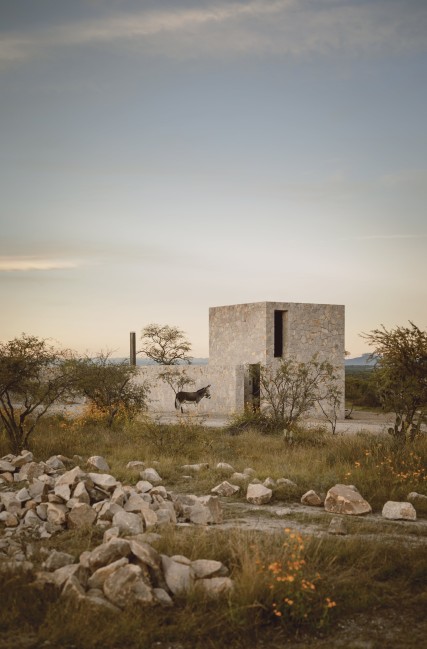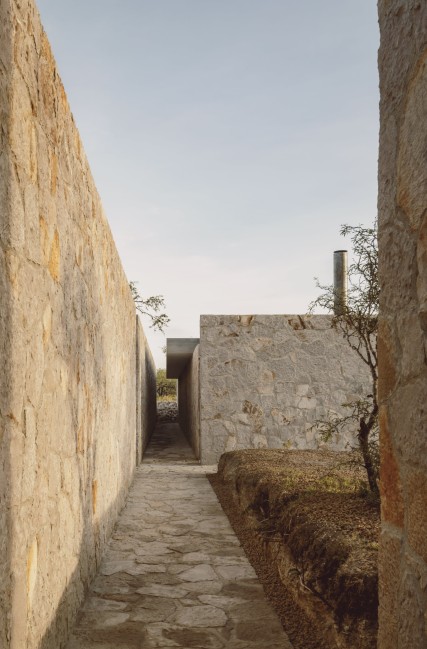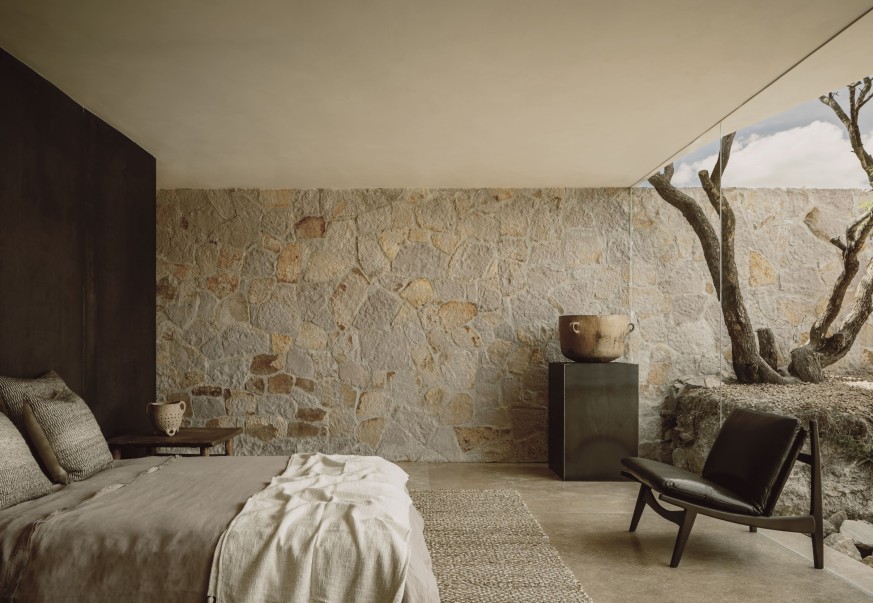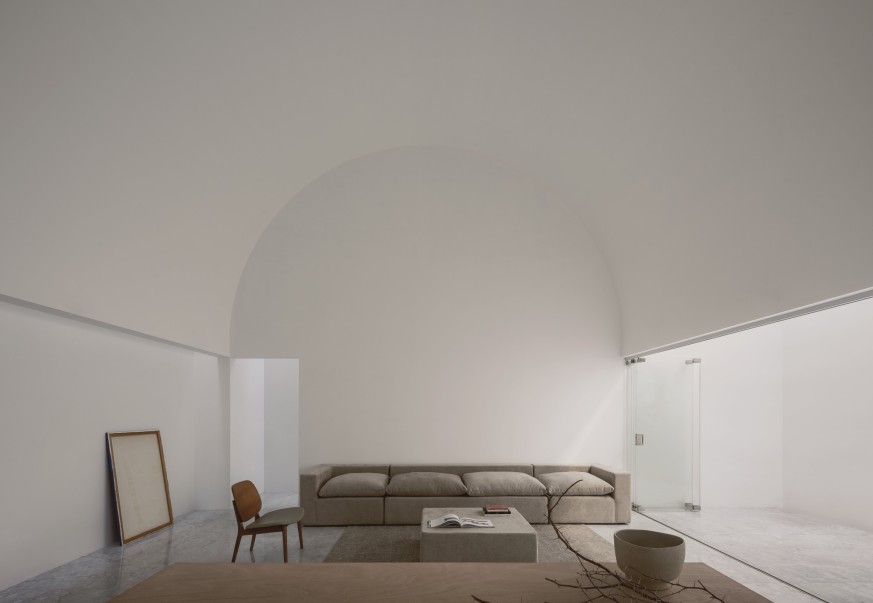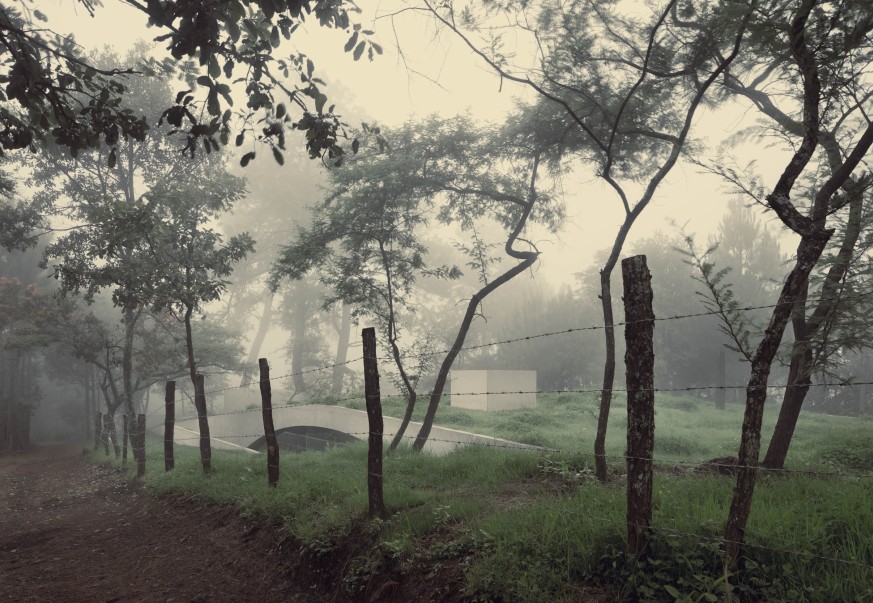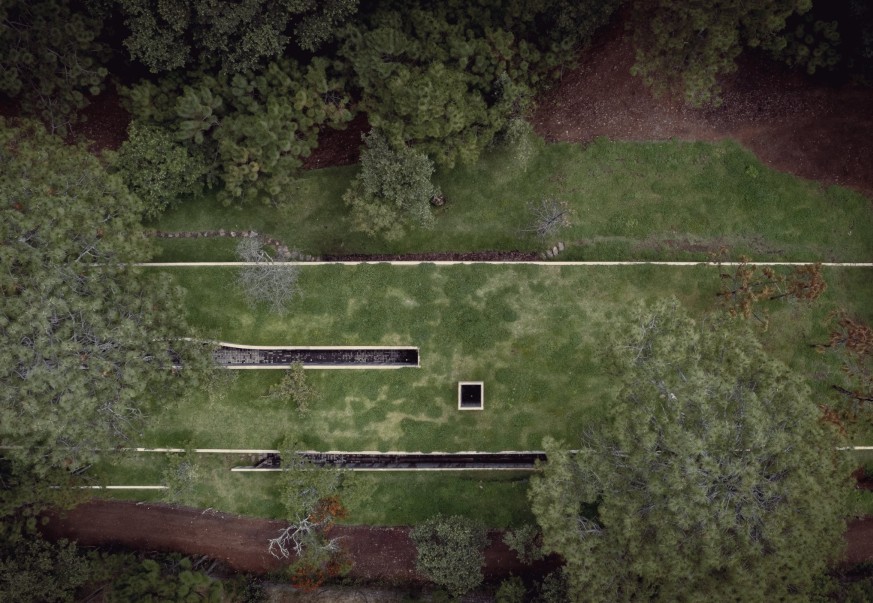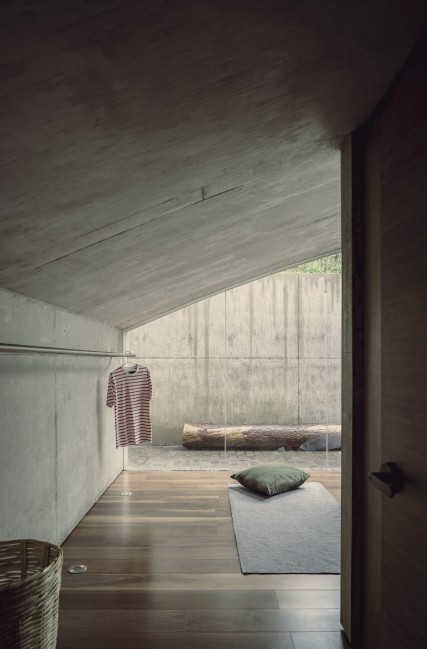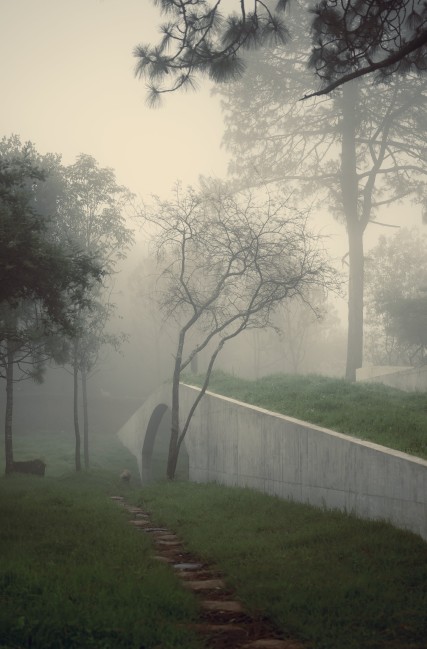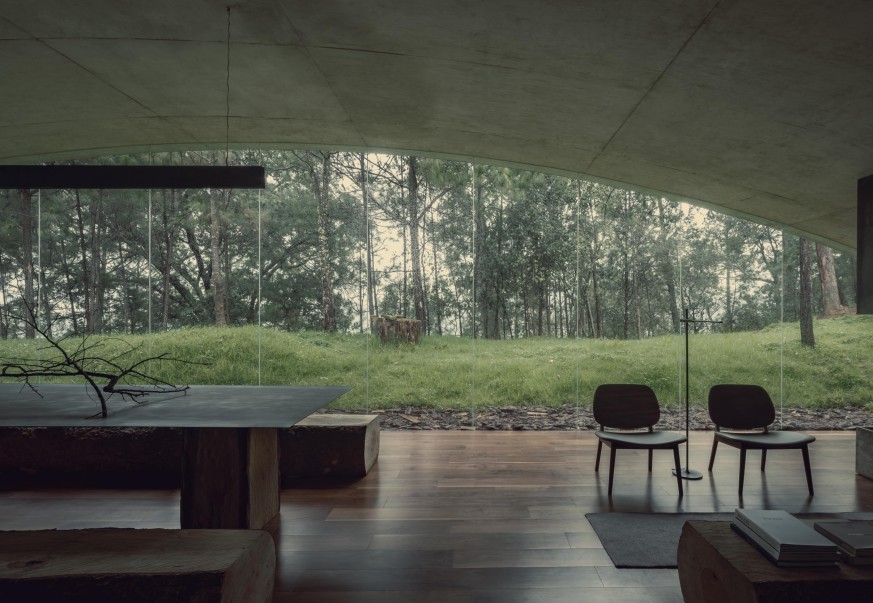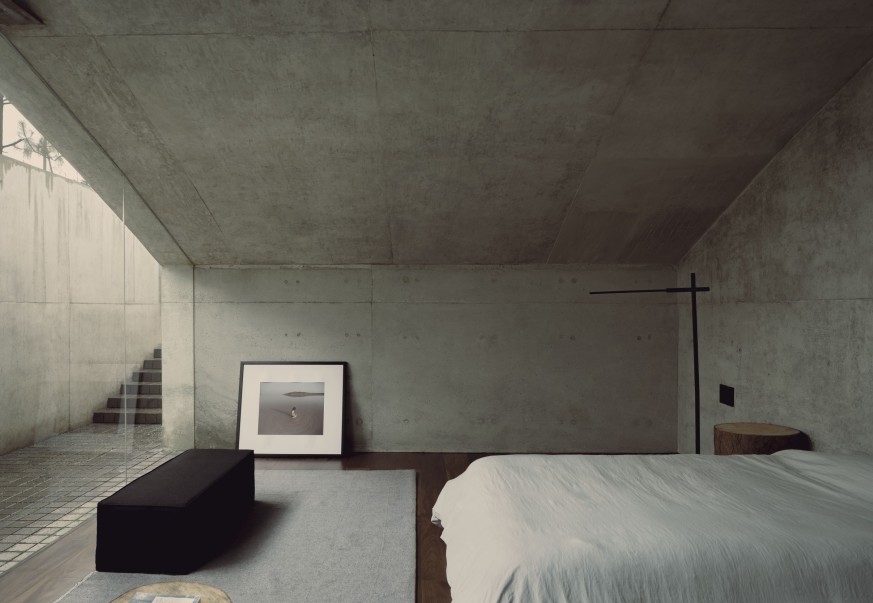Follower First
Unsere Kauf-Objekte erscheinen zuerst im Newsletter + auf Instagram und erst 24h später auf den öffentlichen Portalen.
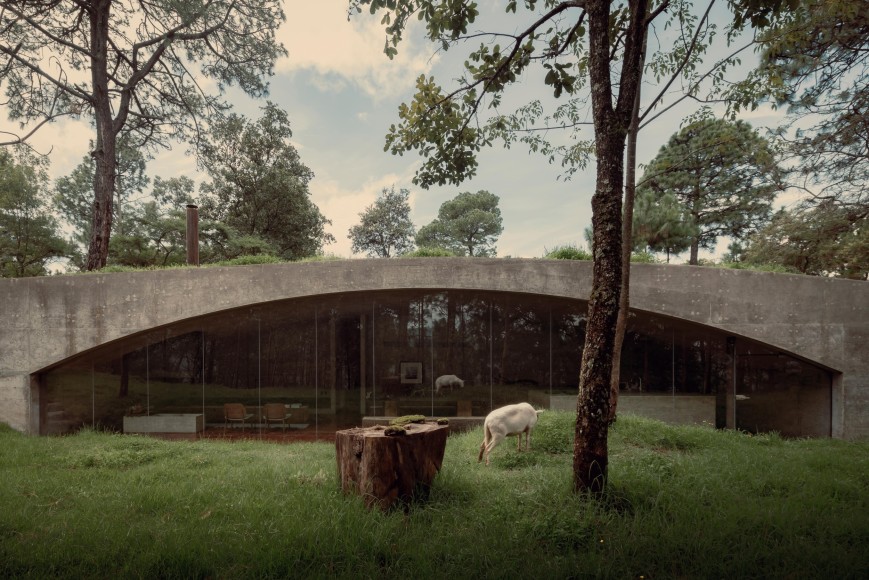
Kannst du ein spezifisches HW Studio Projekt beschreiben, das eure Mission, Räume zu schaffen, die Frieden fördern, am besten repräsentiert?
Um völlig ehrlich zu sein, würde ich sagen, keines von ihnen, da der Zustand des Friedens, von dem ich spreche und den ich ständig suche, ein individuelles inneres Ereignis ist, das allein von der Person und ihrem Bewusstsein abhängt, nicht von den Umständen um sie herum, einschließlich der Architektur. Um die Frage dennoch zu beantworten, glaube ich, dass es das Haus am Hang zur Schlucht und Enso wären, da sie Eigenschaften vereinen, die die Gleichung sehr gut ausbalancieren. Lass mich erklären: In beiden Häusern ist das Glück der Bewohner spürbar; das ist etwas, das man nicht vortäuschen kann, es ist sehr offensichtlich. Beide Häuser haben eine harmonische Beziehung zu ihrer Umgebung, das eine in einer Wüste und das andere in einem Wald, aber beide tanzen von ihrer Künstlichkeit aus sanft mit ihrer Umgebung. Es ist sehr attraktiv zu sehen, wie sie sich einfügen, und schließlich erzeugen sie viel Frieden und Ruhe in uns, da sie gute Architekturwerke geworden sind; in diesen Fällen sind die drei Universen, über die wir normalerweise sprechen, positiv betroffen. Beide Projekte repräsentieren das Gleichgewicht, das wir ständig suchen, nicht nur in unserer Architektur, sondern auch in unserem Leben.
Wie beeinflussen die 'drei Universen' euren Designprozess und das Endergebnis eines Projekts?
Die drei Universen sind sehr wichtig, weil sie die Basis unseres kreativen Prozesses und der Entscheidungen sind, die wir während des Projekts treffen. Praktisch in allen Architekturschulen wird uns beigebracht, eine gründliche Untersuchung des Standorts und der Umgebung durchzuführen, und wir erhalten die Werkzeuge dafür, was sehr gut ist. Es gibt jedoch zwei weitere sehr wichtige Variablen, die wir mit derselben Hingabe erkunden sollten: die Person, die diesen Raum bewohnen wird, nicht ausgehend von ihren Vorlieben, sondern von ihrer Persönlichkeit, die wir durch die Anwendung eines psychologischen Instruments namens 'Big Five' erhalten, den fünf Persönlichkeitseigenschaften, die diese Person definieren. Diese Eigenschaften sind: Extraversion, Verträglichkeit, Gewissenhaftigkeit, emotionale Stabilität und Offenheit für Erfahrungen. Wir erkunden auch die vorherige emotionale Beziehung der Person zum Raum, was uns dazu führt, nach ihren tief verwurzelten Erinnerungen in ihrem Herzen zu fragen und daraus ein Profil zu erstellen, das uns bei unseren Entscheidungen hilft. Schließlich ist die Erforschung und Untersuchung des eigenen Selbst ebenso wichtig wie die anderen beiden, da wahre Weisheit in der Auflösung des Selbst liegt und dies nur durch bewusste Beobachtung erreicht werden kann. Einfacher gesagt, es ist eine tiefgehende Untersuchung der dritten Variable, nämlich des Schöpfers selbst, beabsichtigt. Sobald diese Informationen vorliegen, beginnen Ideen aufzutauchen, als ob sie Fische wären, die an die Oberfläche kommen und sich am Grund des Flusses befanden. Architektur passiert.
Was hat den Namen 'HW Studio' inspiriert und wie integriert sich das Konzept von 'Wabi Cha' in Ihre architektonische Philosophie?
Seit meiner Kindheit habe ich mich tief mit östlichen Konzepten verbunden gefühlt; ihre Art, das Universum wahrzunehmen, ist sehr anders und meiner Ansicht nach eine Ergänzung zu westlichen Sichtweisen. Die ästhetischen und philosophischen Prinzipien von Wabi Cha fassen unseren Anspruch zusammen: eine radikale Vereinfachung des Raumes, um ein kontemplatives Verständnis für die Beziehung zwischen Menschen und ihrer Umgebung zu fördern, und so Verbindungen zu schaffen, die über den Materialismus hinausgehen. Es ist bemerkenswert, wie etwas so flüchtiges und elegantes wie eine Teezeremonie die Grundlage für solch tiefgründige Ästhetik bildet, daher haben wir beschlossen, diese Konzepte zu ehren, indem wir ihren Anfangsbuchstaben verwenden. In all unseren Projekten streben wir nach einer Einfachheit, in der das sich entfaltende Leben im Inneren im Vordergrund steht. Architektur dient als Leinwand für das wunderschöne Kunstwerk derjenigen, die unsere Räume bewohnen.
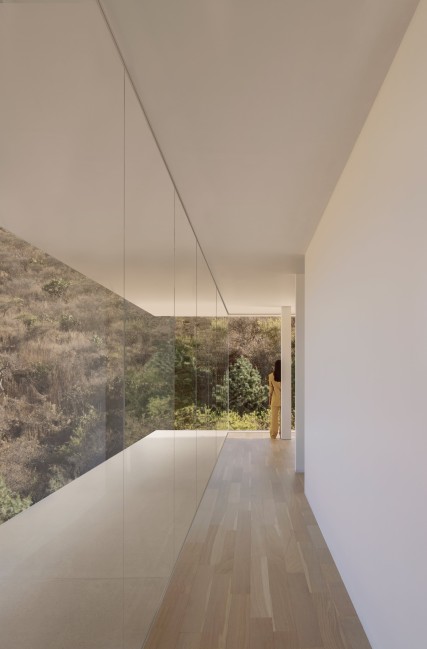
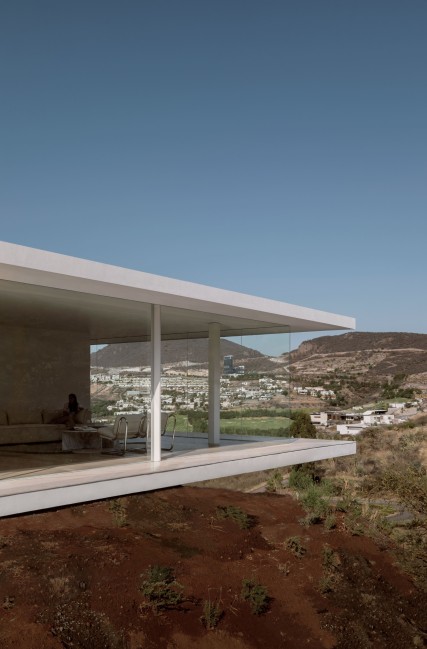
Wie glauben Sie, kann Architektur zum inneren Frieden und zur Stille in unserer hektischen Welt beitragen?
Ich glaube, Architektur sollte uns dazu ermutigen, in unsere inneren Welten einzutauchen; jedoch erkenne ich auch an, dass diese Reise sehr persönlich ist und vielleicht auch bleiben sollte. Dennoch bin ich fest davon überzeugt, dass wahrer Frieden in uns selbst liegt, und solange wir dies nicht erkennen, werden wir weiterhin von äußeren Reizen fasziniert und abgelenkt sein, was eine Welt des Leids und der Ungleichheit aufrechterhält.
Welchen Rat würdest du jungen Architekten geben, die sich auf bedeutungsvolles und friedliches Design konzentrieren möchten?
Ich bin mir nicht sicher, ob ich die richtige Person bin, um jemandem Ratschläge zu geben, aber da du mich fragst, scheint es mir, dass der Buddhismus den sogenannten Edlen Achtfachen Pfad hat: Richtige Erkenntnis, Richtige Gedanken, Richtige Sprache, Richtige Handlungen, Richtiger Lebensunterhalt, Richtiger Einsatz, Richtige Achtsamkeit und Richtige Sammlung. Laut Buddha ist dies der Weg, den man gehen sollte, um Frieden zu finden. Ich glaube, dass, wenn wir als Architekten, Ärzte, Anwälte, etc. diesem Pfad folgen, unsere Arbeit sinnvoll und tiefgründig sein wird.
Wie lebst du privat am liebsten? Kannst du dein Traumhaus beschreiben?
Ich würde gerne in einem Zen-Tempel in Japan leben, und mein Traumhaus wäre dieses Klosterleben mit anderen Mönchen.
English version:
Can you describe a specific HW Studio project that best represents your mission of creating spaces that promote peace?
To be completely congruent and honest, I would say none of them, as the state of peace I speak of and constantly seek is an individual inner occurrence that depends solely on that person and their consciousness, not on the circumstances surrounding them, including architecture. However, trying to answer the question, I believe it would be the hill facing the canyon and Enso, as they gather qualities that make the equation very well balanced. Let me explain: in both houses, the happiness of the clients inhabiting such spaces is noticeable; that is something that cannot be faked, it is very noticeable. Both houses have a harmonious relationship with their environment, one in a desert and the other in a forest, but both, from their artificiality, dance gently with their surroundings. It is very attractive to see them relate, and finally, they generate a lot of peace and tranquility within us, as they turned out to be good pieces of architecture; in these cases, the three universes we usually talk about are positively affected. Both projects represent that balance we constantly seek, not only in our architecture but also in our life."
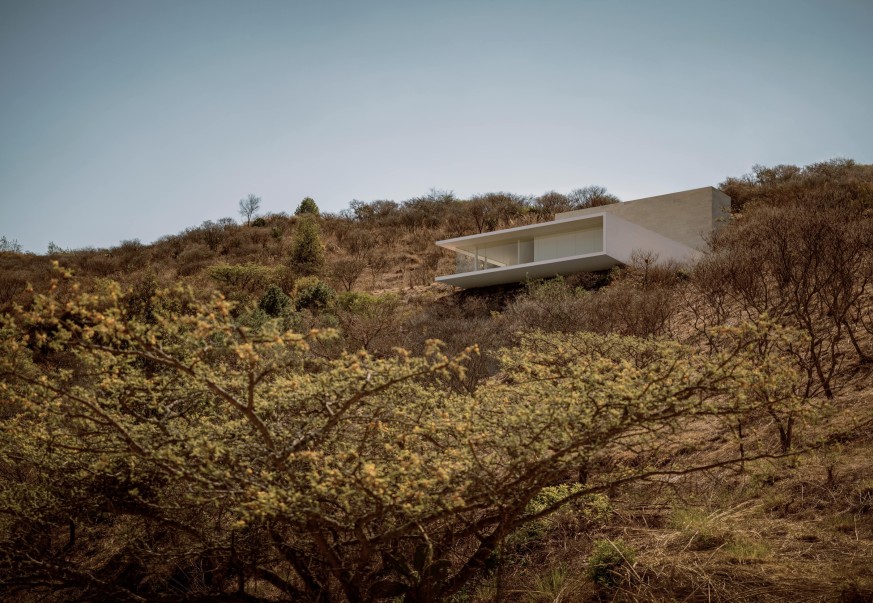
How do the 'three universes' influence your design process and the final result of a project?
The three universes are very important because they are the basis of our creative process and the decisions we will make throughout the project. Practically in all architecture schools, we are taught the profound study we must make of the site and place, and we are given the tools to do so, which is very good. However, there are two other very important variables that we should explore with the same commitment: the person who will inhabit that space, not from their likes, but from their personality, which we obtain by applying a psychological instrument called 'the big five,' the five personality traits that define that person. These traits are: extraversion, agreeableness, conscientiousness, emotional stability, and openness to experience. We also explore the person's previous emotional relationship with the space, which leads us to inquire about their most deeply rooted memories in their heart and from there generate a profile that helps us guide our decisions. Finally, the exploration and research that must be done on oneself are as important as the other two, since true wisdom lies in the dissolution of the self, and that can only be achieved through conscious observation. In simpler terms, a deep investigation of the third variable, that of the creator himself, is intended. Once that information is obtained, ideas begin to appear as if they were fish rising to the surface and were at the bottom of the river. Architecture happens.
What inspired the name 'HW Studio' and how does the concept of 'Wabi Cha' integrate into your architectural philosophy?
Since I was a child, the approach to Eastern concepts deeply resonated with me; their way of perceiving the universe is very different and, I believe, complementary to Western ways of understanding the universe. That said, the aesthetic and philosophical principles of wabi cha summarize our quest: the radical simplification of space to promote a contemplative awareness of the relationship between people and things, so that the human relationships that occur in that space lead to transcending materialism. It is very inspiring that something as ephemeral and beautiful as a tea ceremony becomes the basis of such a profound aesthetic as the Japanese one, hence we decided to use its first letter as a way to pay homage to these concepts. In all our projects, we aim for such simplification that the life unfolding within becomes the important aspect. Architecture is merely the framework of a beautiful piece of art, which is the life of those who inhabit our houses.
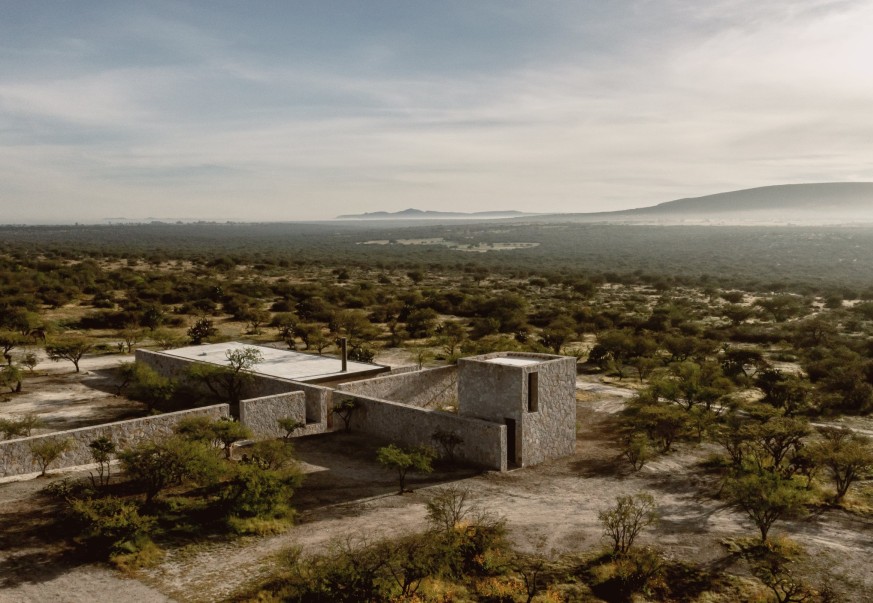
How do you believe architecture can contribute to inner peace and silence in our fast-paced world?
I believe architecture should invite us to explore our own interior; however, I also recognize that it is a very personal quest and maybe it shouldn't be. However, I firmly believe that the only place where we can find peace is within ourselves, and until that is the case, we will continue to be dazzled and stimulated by exciting things that take us away from that place, and therefore, we will continue to have a world marked by pain and inequality.
What advice would you give to young architects who want to focus on meaningful and peaceful design?
I'm not sure if I'm the right person to give advice to anyone, but since you ask me, it seems to me that Buddhism has the so-called Noble Eightfold Path: Right Knowledge, Right Thought, Right Speech, Right Action, Right Livelihood, Right Effort, Right Mindfulness, and Right Concentration. According to Buddha, this is the path one should walk to find peace. I believe that if, as architects, doctors, lawyers, etc., we follow this path, our work will be meaningful and profound.
How do you like to live privately? Can you describe your dream home?
I would like to live in a Zen temple in Japan, and my dream house would be that monastery living with other monks.
